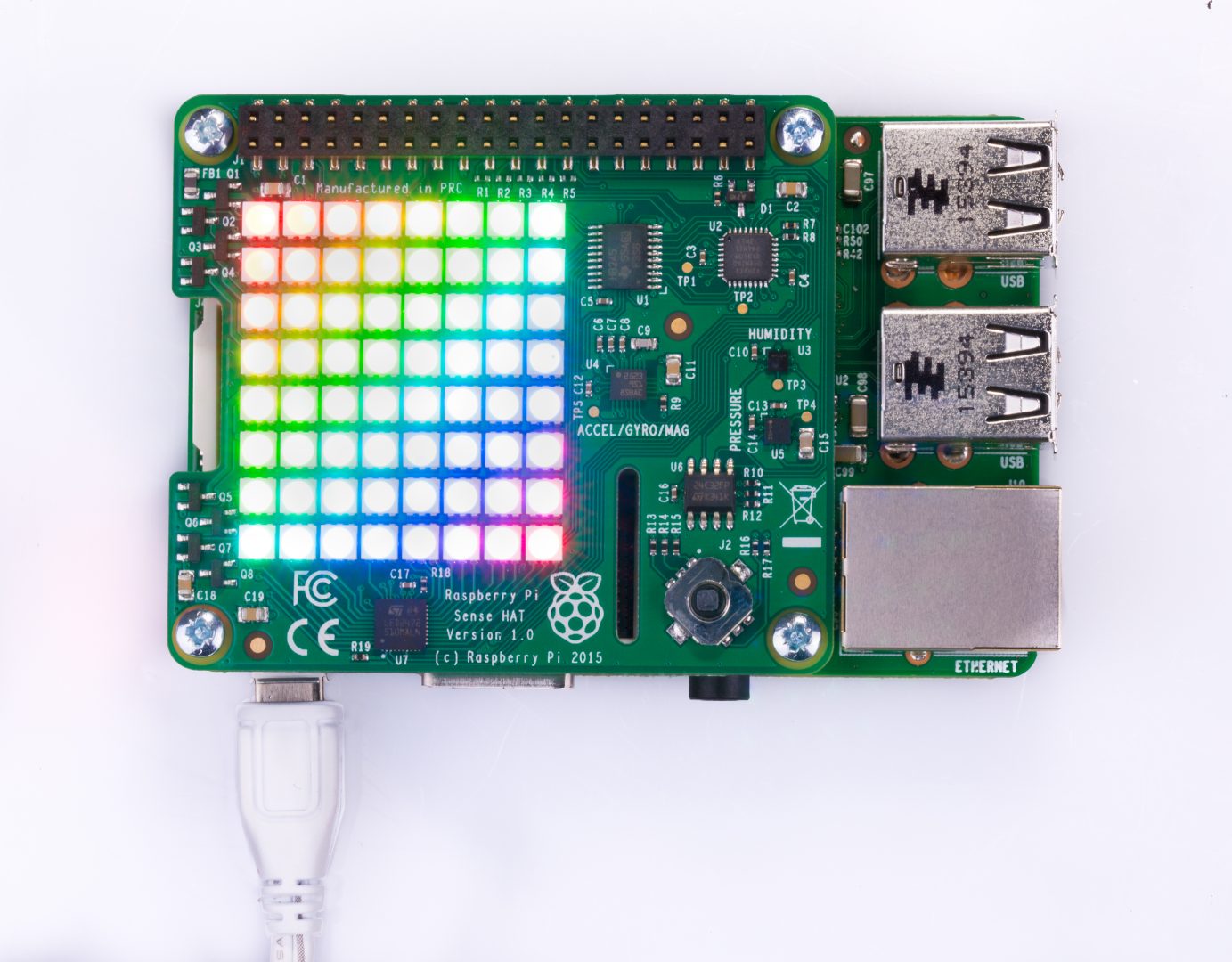- Astro Pi resources. This versatile board was designed especially for a space mission. Two Astro Pi units – comprising a Raspberry Pi with Sense HAT in a special case – are currently aboard the International Space Station (ISS), orbiting 408km above the Earth. Astro Pi is an ESA (European Space Agency) project run with the Raspberry Pi.
- The Sense HAT is an add-on board for Raspberry Pi comprising of a 8×8 RGB LED matrix, a five-button joystick and the following sensors: Gyroscope, Accelerometer, Magnetometer, Temperature, Barometric pressure and Humidity.
- The Sense HAT is an official add-on board that adds a range of motion sensors to Raspberry Pi, including a gyroscope, accelerometer, and magnetometer, along with temperature, pressure, and humidity sensors. It also features an 8×8 LED matrix.
- In this project, you will make your very own MP3 player using a Raspberry Pi and a Sense HAT. You’ll be able to shift between tracks in your playlist, change the volume, and show a cool disco display on the LED matrix.
An important hat for our makerspace is the Sense HAT. This page summarizes it's features and use.
The Sense HAT is an add-on board for Raspberry Pi comprising of a 8×8 RGB LED matrix, a five-button joystick and the following sensors: Gyroscope, Accelerometer, Magnetometer, Temperature, Barometric pressure and Humidity.
The Raspberry Pi is in itself a great device capable of many things. Given it has such a small size, it is portable and can connect immediately to the Internet, we can do many projects out of the box. It can be further enhanced with sensors and electronics gadgets to interact with the world - via it's GPIO ports.
To extend the features with ready-made gadgets, you can acquire a 'HAT'. HAT stands for 'Hardware Attached on-Top'. A popular and powerful HAT is 'Sense HAT' - a suite of sensors which allow the Raspberry Pi to sense the world around it, including an array of LEDs on top suited for displaying any information. On top a small joystick is attached.
Here is a list of all sensors attached to Sense HAT. As mentioned it also features an 8x8 LED matrix and a mini joystick

- Gyroscope
- Accelerometer
- Magnetometer
- Temperature
- Humidity
- Barometric pressure
Please note: this hat together with 2 Pis has gone to space! Please check the Astro Pi Project - a great example of merging education / interest of young students with the British space program. The device below is one of the 2
In order to work correctly, the Sense HAT requires an up-to-date kernel, I2C to be enabled, and a few libraries to get started. Note that my vanilla Raspbian System already included all, but just in case your distro has them missing.
- Update your system


- Install the Sense HAT package which will ensure the kernel is up-to-date, enable I2C, and install the necessary libraries and programs


Raspberry Pi
- [optional] Some authors claim you need also to ensure compatibility with Python 3 by adding the 'Pillow' package
- A reboot may be required if I2C was disabled or the kernel was not up-to-date prior to the install
The Sense HAT is an add-on board for Raspberry Pi comprising of a 8×8 RGB LED matrix, a five-button joystick and the following sensors: Gyroscope, Accelerometer, Magnetometer, Temperature, Barometric pressure and Humidity.
The shift register driving the LED Matrix is a LED2472G connected via an Atmel ATTINY88 communicating via i2c at address 0x46 with the Pi. The Multi-Directional SKRHABE010 Switch/Joystick is similarly controlled.
The sensors themselves also operate over the i2c bus:
Sense Hat Raspberry Pi Zero Gravity
The IMU (Accelerometer and Magnetometer) through a LSM9DS1 found at i2c address 0x1c(0x1e) and 0x6a(0x6b), with Interrupts on the ATTINY88.
Environmental sensors are represented by a LPS25H Pressure/Temperature sensor at address 0x5c and by a HTS221 Humidity/Temperature sensor at 0x5f on the i2c bus.
In addition, the Atmel chip can be reprogrammed via the SPI interface. The pinout herein only maps the reset and chip select - adding a display or other SPI device alongside the Sense HAT should be possible with a few precautions.
Sense Hat Raspberry Pi Zero Turn
Details
|